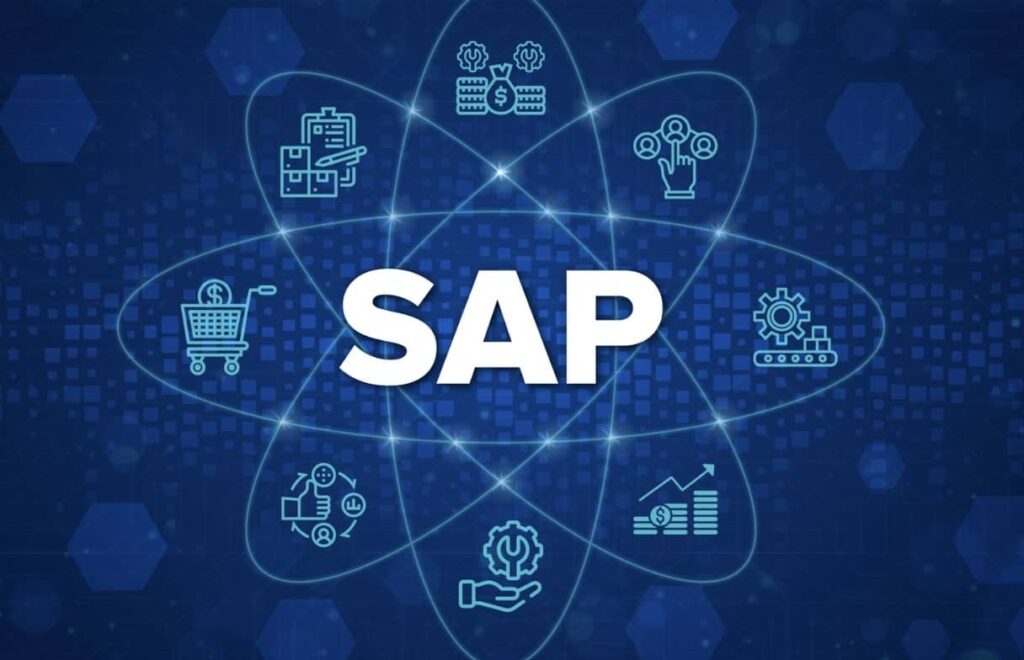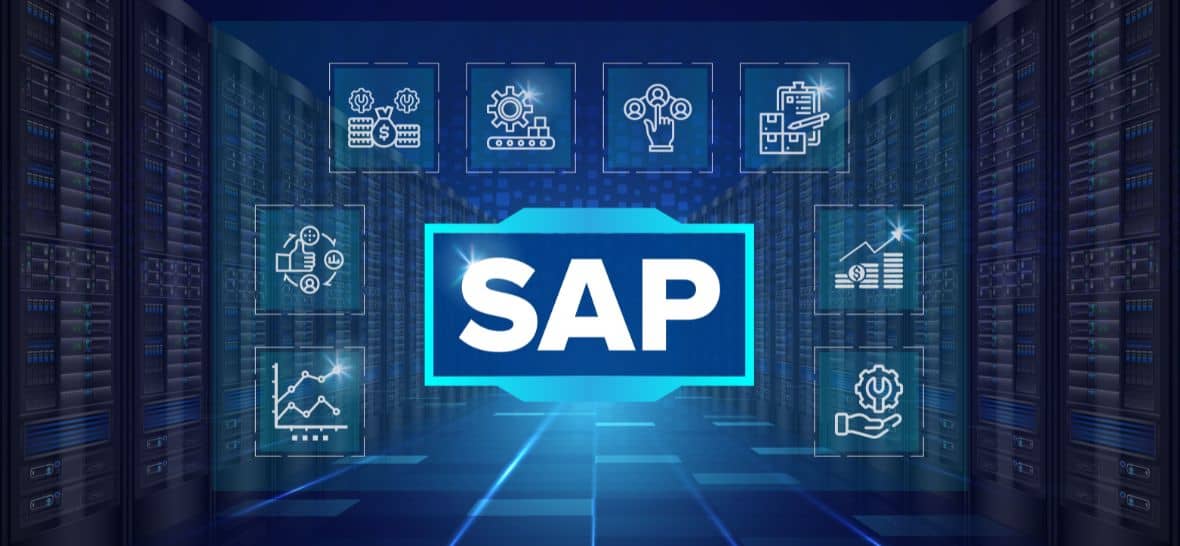The next-generation SAP S/4HANA ERP system from SAP SE replaces legacy ERP versions such as SAP R/3 and SAP ECC ERP.
SAP S/4HANA offers a slew of superior features compared to legacy ERP versions. It leverages SAP HANA, an in-memory database, to ensure real-time data processing. The simplified data model is easier to use and manage and delivers quick insights. Real-time data processing and embedded analytics facilitate user demands. The simplified design facilitates faster innovation cycles.
The big value addition comes through SAP S/4HANA’s intelligent automation capabilities. SAP S/4HANA leverages integrated machine-learning capabilities for real-time analytics. Business managers can make informed data-driven decisions in double-quick time. They remain in control of evolving situations and can seize opportunities fast.
SAP S/4HANA is cloud-ready and offers flexible deployment options. Businesses can deploy it in a private or public cloud or even on-premise.
The advantages notwithstanding, seamless transition poses a big challenge for enterprises. Here are the key considerations for enterprises looking to make a seamless transition from legacy ERP to SAP S/4HANA
1. Define the destination
A clear-cut goal or objective is the first migration step to SAP S/4HANA.Most enterprises invest in upgrading to SAP S/4HANA to
- Streamline operations by automating workflows and reducing manual processes
- Improve reporting efficiency to get real-time insights into operations, inventory and supply-chain data.
- Improve business agility.
Enterprises can have multiple objectives, but clear-cut objectives are indispensable for project success. Clear objectives allow the project team to prioritise tasks and budgets. They can focus on the most impactful improvements without wasting efforts on random tasks that add little value to the project.
To get objective framing right:
- Refer to the enterprise objectives and derive the ERP objectives from them.
- Understand the pain points and desired improvements from key users.
- Frame specific and measurable objectives. Many business managers fall into the trap of using generic terminology such as “increased efficiency.” Instead, articulate what “increased” means regarding specific metrics.
2. Assemble a competent team
Building a competent team is crucial to successful SAP S/4HANA migration.
The key personnel required for any migration project include:
- Internal IT specialists who understand the existing SAP landscape and IT infrastructure. They use their expertise to make correct gap analyses, system configurations, and integrations.
- Experienced SAP consultants. SAP consultants bring the expertise and experience lacking with in-house teams. They make a comprehensive inventory, select the right migration strategy, and apply best practices. Most migration projects hit technical roadblocks, which these consultants can solve.
- Data migration experts, competent in data extraction, transformation, and loading (ETL) tools.
- A resourceful IT manager to coordinate the team. A strong project manager manages resources and ensures prompt communication. They make timely interventions to keep the project on track
Oonboard the needed talent and expertise before starting the exercise. Lack of access to expertise when needed can derail the project, leading to significant waste.
3. Inventory and prepare assets for migration
Before starting the migration, inventory the existing SAP landscape. Perform a gap analysis, comparing the existing stage to the optimal or desired state.
Identify all the SAP modules, such as finance, materials management, sales, and distribution. Use existing SAP reports to extract module, user, and functionality data.
Map the business processes that each module supports for insights into how migration will affect these processes. One way to gather information on business processes and data usage is to organise workshops with key department users.

Not all features and functionality in the legacy system require migration. Identify mission-critical functionalities or features crucial to daily operations. But do not overlook underutilised functionalities. These functionalities may have little use in the existing system. But it could have potential value in the new system and unlock new capabilities within SAP S/4HANA.
Identify and document the custom configurations and interfaces specific to the current system. Evaluate whether these remain relevant to the new system. Decide whether to migrate, adapt, or retire these configurations.
A comprehensive asset inventory offers insights to frame the migration roadmap.
4. Prepare and cleanse the data
Identify the data to be migrated to the new system. Integrating data from various sources may pose a challenge. After identifying the data, cleanse the data marked for migration to ensure accuracy and consistency.
Also, reduce the data volume to migrate. Legacy ERP systems accumulate historical data. Migrating all data increases costs and bloat. The more data volumes to migrate, the longer the timeline and resource requirements.
Categorise data into:
- Hot or frequently accessed data. This includes master customer data, materials data, purchase and sales data, and more.
- Warm or less frequently accessed but still relevant data.
- Cold, or infrequently accessed or historical data.
As a rule of thumb, migrate hot and warm data and archive cold data. Ensure critical data, mostly hot data, is available in the live system.
After segregating data, cleanse it to refine and enhance quality. Data cleansing removes duplicate records, standardises formats and values, and corrects errors. The exercise also involves validating data against predefined rules and criteria.
Employ automated tools to execute predefined cleansing rules and corrections. SAP offers several tools for data migration. SAP Data Services offers comprehensive data integration and transformation capabilities. SAP Information Steward enables data profiling, quality monitoring, and cleansing.
Human experts still need to review and validate complex or critical data points.
5. Select the most appropriate migration approach
A thorough inventory of existing assets makes explicit the most suitable migration strategy. The three most popular approaches are brownfield, greenfield, and hybrid.
Brownfield migration is upgrading existing SAP systems to S/4HANA while preserving data and settings. The migration leverages the existing infrastructure and is, as such, easy to execute. This option suits well-maintained systems with minimum customisations. The risk with the brownfield approach is the carry-over of legacy inefficiencies. In most instances, cleansing and optimising the migrated data becomes inevitable. Such an approach also offers limited flexibility.
Greenfield migration starts afresh with a new S/4HANA system without carrying over any baggage from the legacy ERP. This approach entails a significant overhaul and offers flexibility. It is best suited to designing a future-proof system and to upgrade from outdated ERPs. Most business process transformation projects require greenfield migration. The \exercise is time-consuming and costly, though. The project team has to rebuild configurations from scratch.
Selective migration is a hybrid approach that migrates essential data and functionalities to a new S/4HANA system. It strikes a balance between leveraging existing investments and modernisation. Getting it right requires careful planning to select the right components for migration.
6. Execute the migration
The migration of data and configurations to the new system is straightforward if the groundwork is proper.
Successful migration depends on the use of appropriate tools.
The SAP Readiness Check tool assesses the target system’s readiness for SAP migration.
The SAP S/4HANA migration cockpit, a built-in tool, simplifies the migration process. It guides the migration team through data conversion and system configurations.
Several third-party tools also get the job done. Each has its niche and strong points.
Platforms such as Tricentis offer comprehensive support during and even after the migration. The platform ensures a smooth and risk-free SAP S/4HANA migration, ensuring there is no disruption to the business process or customer experience during the process. Automated testing makes it easy to keep pace with the S/4HANA updates.
7. Handle resistance to change
Migration to SAP S/4HANA is a core change. It would mean disrupting the existing order and changing workflows. Such disruptions lead to resistance to change among the rank-and-file employees. Success depends on the ability to overcome resistance to change.
Be transparent about the process. Transparency fosters trust and minimises resistance to change.
Communicate to the team on the need to migrate to the new ERP. Maintain open communication channels throughout the process. Provide clear information about timelines, potential disruptions, and user training opportunities. Articulate the advantages, how it will help execute work better, and how it will benefit the stakeholders.
Train the team with the skills and knowledge to navigate the new system. Co-opt both technical training and user adoption strategies in the training. Familiarity decapitates the resistance to change.
Enterprises running legacy SAP ERP systems, such as ECC, will need to transition to SAP S/4HANA soon. The transition will become inevitable as SAP will stop mainstream maintenance for core SAP ERP releases by the end of 2027. Running out-of-support applications poses huge risks for enterprises.
SAP S/4HANA migration is a complex process that demands strategic planning, expertise and extensive resources. But committing to it improves business efficiency and competitiveness. Enterprises with SAP S/4HANA can meet the demands of Industry 4.0 with ease.












